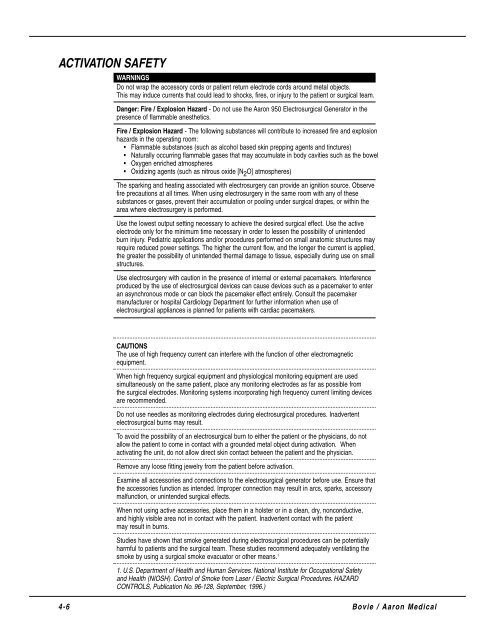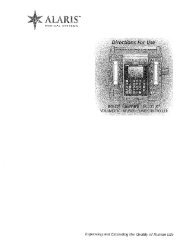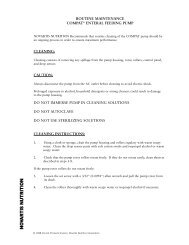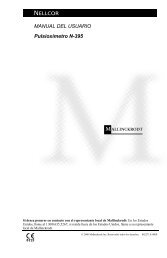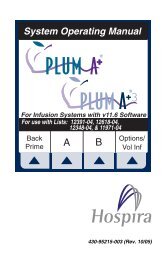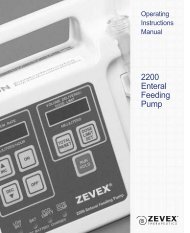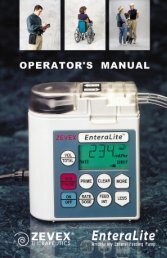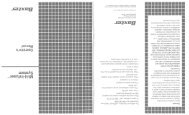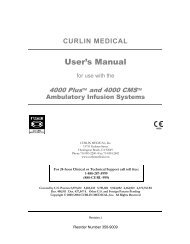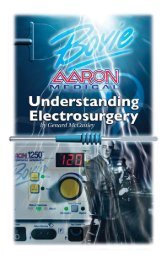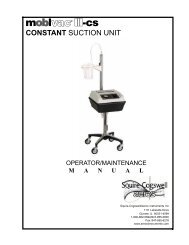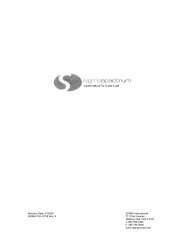Aaron Bovie 950 User Manual - Med-E-Quip Locators
Aaron Bovie 950 User Manual - Med-E-Quip Locators
Aaron Bovie 950 User Manual - Med-E-Quip Locators
- No tags were found...
Create successful ePaper yourself
Turn your PDF publications into a flip-book with our unique Google optimized e-Paper software.
ACTIVATION SAFETYWARNINGSDo not wrap the accessory cords or patient return electrode cords around metal objects.This may induce currents that could lead to shocks, fires, or injury to the patient or surgical team.Danger: Fire / Explosion Hazard - Do not use the <strong>Aaron</strong> <strong>950</strong> Electrosurgical Generator in thepresence of flammable anesthetics.Fire / Explosion Hazard - The following substances will contribute to increased fire and explosionhazards in the operating room:• Flammable substances (such as alcohol based skin prepping agents and tinctures)• Naturally occurring flammable gases that may accumulate in body cavities such as the bowel• Oxygen enriched atmospheres• Oxidizing agents (such as nitrous oxide [N 2 O] atmospheres)The sparking and heating associated with electrosurgery can provide an ignition source. Observefire precautions at all times. When using electrosurgery in the same room with any of thesesubstances or gases, prevent their accumulation or pooling under surgical drapes, or within thearea where electrosurgery is performed.Use the lowest output setting necessary to achieve the desired surgical effect. Use the activeelectrode only for the minimum time necessary in order to lessen the possibility of unintendedburn injury. Pediatric applications and/or procedures performed on small anatomic structures mayrequire reduced power settings. The higher the current flow, and the longer the current is applied,the greater the possibility of unintended thermal damage to tissue, especially during use on smallstructures.Use electrosurgery with caution in the presence of internal or external pacemakers. Interferenceproduced by the use of electrosurgical devices can cause devices such as a pacemaker to enteran asynchronous mode or can block the pacemaker effect entirely. Consult the pacemakermanufacturer or hospital Cardiology Department for further information when use ofelectrosurgical appliances is planned for patients with cardiac pacemakers.CAUTIONSThe use of high frequency current can interfere with the function of other electromagneticequipment.When high frequency surgical equipment and physiological monitoring equipment are usedsimultaneously on the same patient, place any monitoring electrodes as far as possible fromthe surgical electrodes. Monitoring systems incorporating high frequency current limiting devicesare recommended.Do not use needles as monitoring electrodes during electrosurgical procedures. Inadvertentelectrosurgical burns may result.To avoid the possibility of an electrosurgical burn to either the patient or the physicians, do notallow the patient to come in contact with a grounded metal object during activation. Whenactivating the unit, do not allow direct skin contact between the patient and the physician.Remove any loose fitting jewelry from the patient before activation.Examine all accessories and connections to the electrosurgical generator before use. Ensure thatthe accessories function as intended. Improper connection may result in arcs, sparks, accessorymalfunction, or unintended surgical effects.When not using active accessories, place them in a holster or in a clean, dry, nonconductive,and highly visible area not in contact with the patient. Inadvertent contact with the patientmay result in burns.Studies have shown that smoke generated during electrosurgical procedures can be potentiallyharmful to patients and the surgical team. These studies recommend adequately ventilating thesmoke by using a surgical smoke evacuator or other means. 11. U.S. Department of Health and Human Services. National Institute for Occupational Safetyand Health (NIOSH). Control of Smoke from Laser / Electric Surgical Procedures. HAZARDCONTROLS, Publication No. 96-128, September, 1996.)4-6 <strong>Bovie</strong> / <strong>Aaron</strong> <strong>Med</strong>ical


